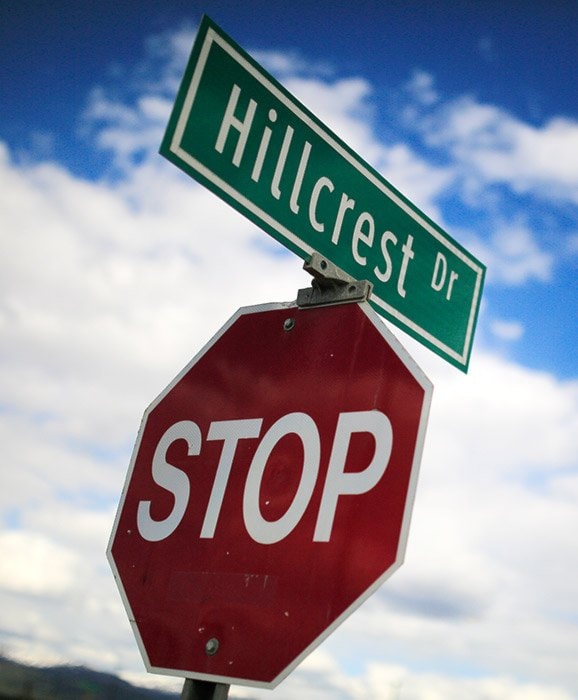The May 9 rejection of the proposed Hillcrest improvement project may have stunned city hall, but it has left many citizens asking a bigger question: what exactly is a local improvement charge (LIC)?
Mayor Dan Curtis said at the May 16 council meeting he felt there was a lot of misinformation circulating about LICs among Hillcrest residents.
LICs are levied by the city on homeowners to help pay for improvements and repairs in neighbourhoods. The city’s website describes LICs as “cost-sharing arrangements between the city and abutting property owners.” They help pay for improvements to streets, sewers, water mains and other infrastructure.
Since 1988, there have been 22 proposed LIC projects in Whitehorse. Of these, 36 per cent — eight projects, including Hillcrest — were defeated by voters.
Prior to Hillcrest, the last rejected one was on Industrial Road in 2008.
Mike Gau, director of development services, said the Municipal Act, which is a territorial legislation, governs the way the city handles LICs.
“That’s not our legislation and we are subject to the Municipal Act and have no choice but to follow,” said Gau.
“What the Municipal Act does is create space for municipalities to create an LIC,” said Sarah Murray, a spokesperson for the Department of Community Services. “It’s kind of open-ended.”
Gau said LICs are usually enacted when a neighbourhood requests infrastructure work. The proposal is put before council, which votes on whether to allocate funds for consultation. If the project is approved, city staff begin designing the project and calculating its cost. The project is then voted on by homeowners.
Project costs are calculated by the amount of frontage on each property. Homeowners, said Gau, pay one-third of the cost and business owners pay two-thirds. In both cases the city pays for the rest.
In the case of the Hillcrest LIC, the cost per metre for the project was $1,900. This means homeowners would have paid $633 per metre.
That means a person with an expensive new home with a small yard could pay as much or less than a person with an older, less valuable home with a big yard, said Shaunagh Stikeman, president of the Hillcrest Community Association.
LICs are used in other municipalities, such as Vancouver and Ottawa, said Stikeman.
The average Hillcrest homeowner was expected to pay roughly $15,000 for the proposed project. Gau said that is not an unusual amount for an LIC.
In an approved LIC, residents have three choices for payment, Gau said: to pay up front, take a bank loan, or take a loan from the city.
If they take a bank loan, they are subject to the typical conditions of a loan, and maintain the debt even if they sell their house. If they take out a loan with the city, the debt is paid through their taxes over a period of 20 years at an estimated interest rate of 6.25 per cent.
“The biggest factor (in the rejection) overall was the cost to property owners and their ability to pay,” Gau said.
Gau said LICs are the price of owning an older home in an older neighborhood.
“There are nice places in Hillcrest, don’t get me wrong, but they are older…. People who buy (older houses in older neighbourhoods) are looking for lower-cost housing, but they should be aware they need (infrastructure) repairs,” he said.“That’s part of ‘buyer beware’. Buy a really old home in a really old neighbourhood and (LICs) are part of the cost.”
“There are compromises when you buy an older house … that’s why the price is lower.”
Homeowners who purchased new houses in the city’s newer neighbourhoods paid 100 per cent of the infrastructure costs when they purchased their home, Gau said.
Many residents also objected to the voting system. Residents and members of council described counting uncast ballots as yes votes for the project. This is not, Gau said, quite true: instead, the majority of homeowners — 50 percent plus one — must vote against the project in order to defeat it.
In the case of Hillcrest, 41 ballots weren’t returned, 33 votes were in favour and 94 votes — 56 per cent — rejected the project.
This is different from the way voting systems normally work, said Gau. LICs are the only situation where this system is used.
“The principle of an LIC is that the benefiting party pays,” Gau said. “It’s unfair to expect taxpayers to pay for the improvements.”
The $14 million the city had set aside for its portion of the project was to come from the federal government.
So what does that mean for neighbourhoods like Hillcrest, where the infrastructure need repairs, but the homeowners can’t afford to pay the LIC charges the city levies?
“Whatever changes we make must be affordable and in the confines of the Municipal Act,” Gau said.
“We need infrastructure improvements to be a priority in all neighbourhoods — high or low income. Residents are willing to pay their fair share but it has to be affordable,” Stikeman said.
“If the city stays on this path, we will end up with have and have-not neighborhoods. Nobody wants to live in a city like that.”
“I think we need a little more compassion,” said Stikeman.
Contact Lori Garrison at lori.garrison@yukon-news.com
